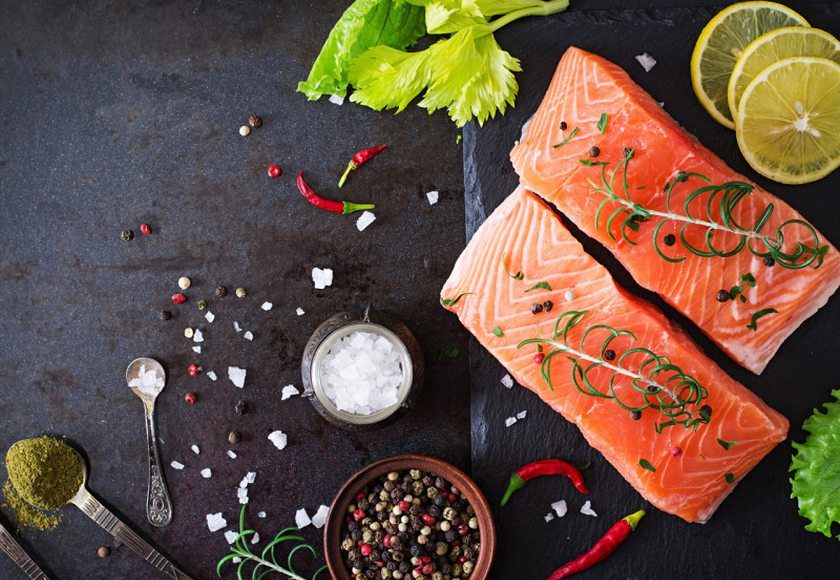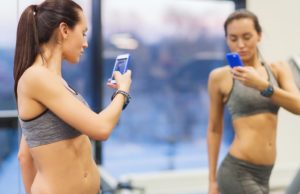In an era where diet plans seem to be more complicated than ever, Ian Smith, M.D., wants to simplify nutrition with a simple technique: eating clean.
A physical rehab specialist by training, the Chicago-based doctor and New York Times bestselling author of multiple health books has carved out a niche in public health. In his latest book, The Clean 20, Smith lays out a simple plan to help regular folks—rather than the extreme dieters among us—shed excess weight and live with a little more energy.
The fundamental premise is simple: cut out anything artificial, synthetic, or man-made. If it’s unpronounceable (besides “quinoa”), it’s out. Preservatives, emulsifiers, dyes, ambiguous “natural and artificial flavors”: out.
What The Clean 20 does allow: quite a lot, actually. Bread is okay, as long as it’s whole wheat and—you guessed it—doesn’t contain any preservatives or sweeteners. Ditto for eggs (yes, even the yolks) and cheese. Once you’ve eliminated the non-food from your diet, Smith argues, flexibility is the most important factor in getting people to adopt (and adhere to) a healthier lifestyle.
Your Guide to Eating Clean
Most importantly, The Clean 20 seems to work: In Smith’s own informal, non-clinical testing, more than 300 volunteers said they lost an average of 10 lbs over several months; they also felt healthier and more energized.
Smith spoke with Men’s Journal about the origins of The Clean 20, why your liver is better than any juice detox, and why even he indulges in the occasional slice of New York City pizza.
Men’s Journal: You’ve written plenty of health-focused books. What inspired The Clean 20?
Dr. Ian Smith: When I was doing research for my last book, Blast the Sugar Out, I saw how much sugar—and how many artificial, synthetic ingredients—were starting to appear in our foods. I’ve specialized in wellness and nutrition for years, and even I wasn’t fully aware of how many synthetic ingredients get dumped into our food on a daily basis.
I wanted to write a book about how we can reduce—not totally eliminate, because it’s very difficult to completely eliminate—processed foods, and how we should really focus on benefiting from nutritional powers of foods in their more natural state. What if we got rid of toxic byproducts, and hormone disrupters, and antibiotics, and for 20 days ate as clean as we could? I believed people could see a dramatic difference.
How did you go about researching the impact of eating clean?
I developed a plan, reached out to my Facebook followers, and presented the plan to them. People are always trying to lose weight. It wasn’t scientific or anything—purely informal. But after looking at some of the results, people lost, on average, 10 pounds over 20 days.
People reported increased energy. They talked about lowering their blood pressure, blood cholesterol, blood sugar. This plan was having an overall transformative effect on people beyond the scale. And that’s what got me excited.
The 13 Best Foods for Weight Loss
We’ve all seen plenty of plans claiming to help people lose weight. How does this one work? Is there a set of 20 foods as well?
I do talk about 20 clean foods, but there are no set 20 foods, actually. The goal is simply to eat clean. That’s the beauty of it—it’s completely customizable. The plan is based on what your food preferences are, or what your allergies may be, or what your accessibility to the foods may be. So you really can make it work for you.
Were people surprised by some foods they had to cut out?
Flavored, sugary yogurt is at the top of that list. A lot of the yogurt we eat has a lot of artificial sweeteners and additives. Plain yogurt is usually fine, but the stuff with fruit on the bottom or a ton of flavors often has a lot of artificial ingredients.
Second would be those breakfast bars. You pick up a typical breakfast bar in your grocery store, and it probably has 15 to 20 ingredients in you probably can’t even pronounce, let alone understand.
Conversely, what foods do people easily adopt? Quinoa is great and all, but not everyone knows what to do with it.
People on The Clean 20 are surprised they can have things like cheese, dairy, and eggs. Honestly, many people are already eating within these food categories. The problem is, they’re not eating the cleaner version of these foods.
You can have some bread, but make sure it’s 100% whole grain, no sugar added. Same goes for pasta. People love white pasta. They look at whole-wheat pasta and automatically think it’s not gonna taste good. But they cook whole-wheat pasta, they add some chicken, vegetables, spices, and lemon sauce, and they love it.
4 Things You Must Do to Achieve 7% Body Fat
Plenty of artificial ingredients are prevalent. What culprits are surprisingly ubiquitous?
Food coloring and natural flavor. Natural flavor isn’t always “natural.” It’s purposely ambiguous. When people look at food labels, they’re often surprised to see they have food coloring, dyes, natural flavors—these things aren’t as healthy as they think they thought they were at first.
Why are they so bad for us?
A lot of them are hormone disrupters. Your liver has to metabolize these synthetic chemicals, and they can lead to toxic byproducts. The accumulation of these toxic byproducts in our body can lead to long-term problems. Is eating one cupcake gonna do it to you? Absolutely not. But when you eat several foods with these products over time, you end up aggregating these different chemical byproducts that can be hazardous to your health.
So could you call these additives a kind of physiological stress on your system?
One-hundred percent. Particularly the liver, which is really the body’s major detoxifying organ. All these different chemicals can overwork the liver, which hinders the liver from metabolizing important things for our daily and normal functioning.
A lot of nutrition—at least as it translates into physical change like weight loss—ultimately incorporates personal responsibility. How do you get a diet change to stick?
There’s no such thing as an effortless diet program that’ll yield sustainable results. Right? Now, you don’t have to crush yourself with healthy eating. But you do need to think about what you’re buying, which is why I talk a lot about grocery lists. You do need to do meal prep. Meal prep gives you the organization you need, and helps avoid some dietary traps.
The 7% Body-fat Diet
You said people lost an average of 10 pounds on this program. Does cutting out synthetic ingredients help reduce water weight?
Water weight may be responsible for the first two or three pounds, maybe. But people are also losing “real” weight, because clean eating means getting rid of a lot of hidden calories. If you do just drop soda from your diet, you can lose five pounds in six months.
Combining that with some movement—20 minutes of exercise, about four or five days a week—can lead to significant weight loss for most people. You’ll lose weight with small changes.
Change is the hard part.
And that’s why I say: Listen, you’re not going to be perfect—you’re going to be better. I’m not speaking to the extreme guy. This is for the average person who wants to make a change, hit that reset button, but not go crazy.
So the goal is to be realistic, rather than perfect.
If people try to be perfect or unrealistic, they get really pissed off the minute they go off the plan. They feel like they’ve totally blown it. And that’s not the case.
You don’t want to spend your life looking at the back of packages, cursing yourself, not having some ice cream for dessert. That’s ridiculous. I don’t want to feel like I’m being overly punitive with myself. I love a good New York slice of pizza.
19 foods to achieve 7% body fat
For access to exclusive gear videos, celebrity interviews, and more, subscribe on YouTube!











